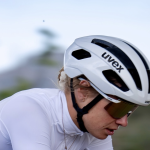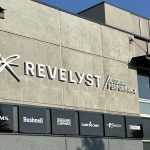The Lenzing Group said a crack down on polluting textile plants in China contributed to stable fiber prices in the second quarter that helped boost the company's profits in the first half.
The Austrian company, which is a major supplier of viscose, or wood-based rayon fibers such as Modal and Tencel, reported consolidated revenue reached EUR 955.4 million in the first half ended June 30, up 6.2 percent compared with a year earlier.
Currency effects, slightly higher sales volumes and an improved product mix were responsible for the revenue increase.
Earnings before interest, taxes, depreciation and amortization (EBITDA) improved by 37.7 percent to EUR 126.5 million, up from EUR 91.9 million in the previous year. The EBITDA margin was 13.2 percent, compared to 10.2 percent in the first half of 2014. Half-year earnings before interest and taxes (EBIT) amounted to EUR 60.5 million, or 86.7 percent above the comparable EBIT of EUR 32.4 million in the prior-year period. This corresponded to an EBIT margin of 6.3 percent (H1 2014: 3.6 percent).
“Lenzing delivered a solid performance in the first half of 2015. The underlying reasons were the currency effects which turned out to be very positive for us due to the weakness of the euro, good fiber demand in the second quarter and our improved cost position”, said Stefan Doboczky, CEO and chairman of the management board, Lenzing AG.
China crackdown boosts fiber prices
“Viscose fiber prices in China, the world’s largest sales market for fibers, increased toward the end of the second quarter due to a more favorable supply-demand ratio related to several local viscose fiber production plants being shut down for environmental reasons,” said Doboczky. “We remain cautious concerning prospects for the rest of 2015, in light of the fact that these capacities could be put into operation again.”
Investment activity was cut back following the completion of the large Tencel fiber production facility in Lenzing, Austria in the previous year. Investments focused on necessary maintenance work as well as quality and optimization measures in fiber and pulp production. Lenzing is currently focusing on investments designed to optimize costs and quality due to the ongoing uncertain market conditions and increasing quality demands.
The excelLENZ cost optimization initiative continued to be implemented in the first half-year according to plan, and proved to be very successful. From today’s perspective the targeted effects of about EUR 160 million p.a. will be completely achieved. Its full impact will be felt starting in 2016. The restructuring program to adjust capacities of the technical units of Lenzing AG and the subsidiary Lenzing Technik, which was launched in the first quarter of 2015, is on schedule.
Denim manufacturers load up on Tencel
Lenzing was just as successful in further developing the market for high quality viscose products in the first half of 2015 as for Tencel. Demand for Tencel used in jeans (denim) remained consistently strong, and the number of processors integrating Tencel into their denim fabrics has doubled over the last twelve months.
Furthermore, the new Lenzing fiber Tencel A100 MICRO was successfully launched on the market in the first half of 2015. Lenzing also further expanded its strong market position for nonwovens.
Outlook
The specific market environment for the man-made cellulose fiber industry improved somewhat in the middle of 2015, compared to the end of the first quarter. Solid volume demand up until now was followed by initial fiber selling price increases. The troubled geopolitical situation, the economic situation in China and unforeseeable exchange rate fluctuations are factors of uncertainty in the second half of 2015.
Despite a volatile environment, the Lenzing Group expects a further improvement in its operating results compared to 2014, as well as a further reduction in its net financial debt. Medium and long-term growth rates in the man-made cellulose fiber industry are expected to be higher than that of the global fiber market.















